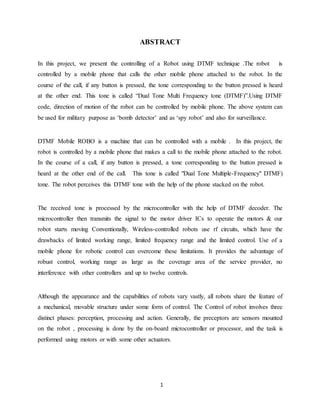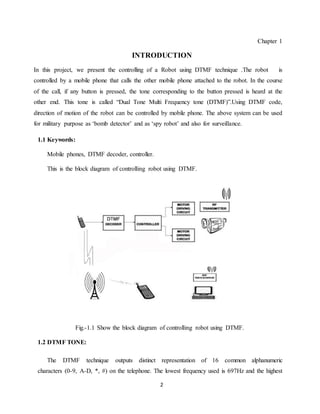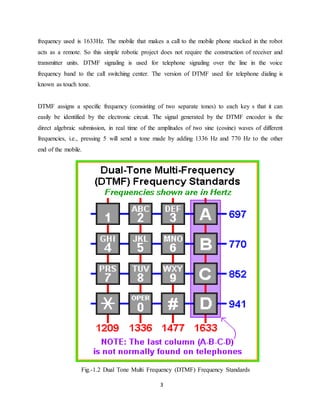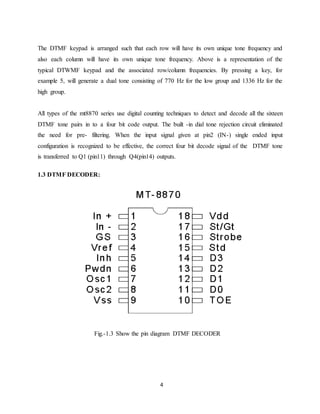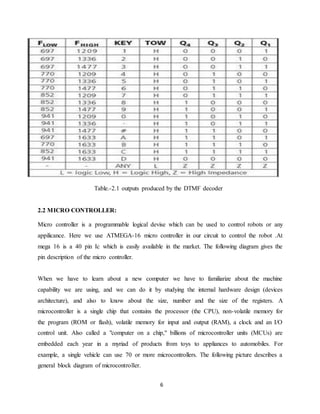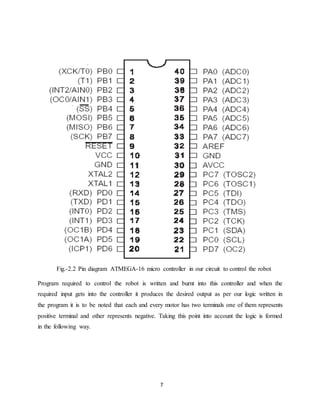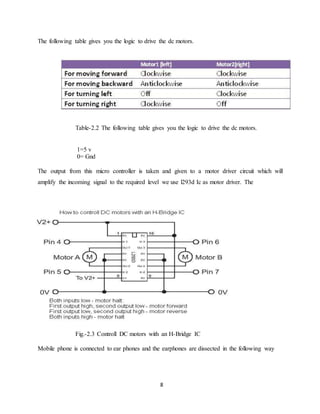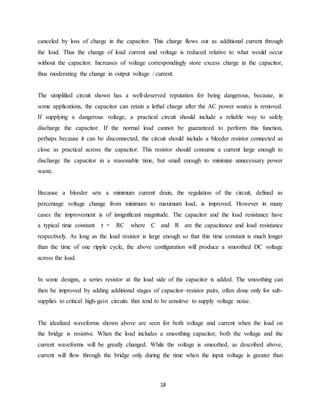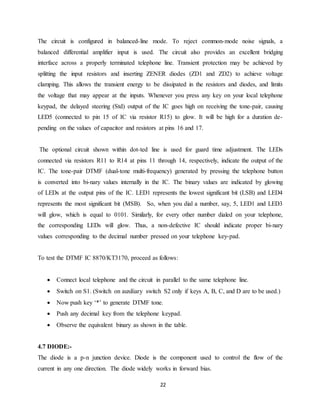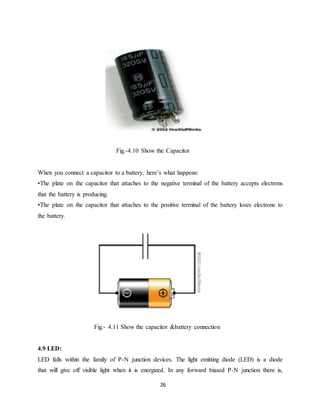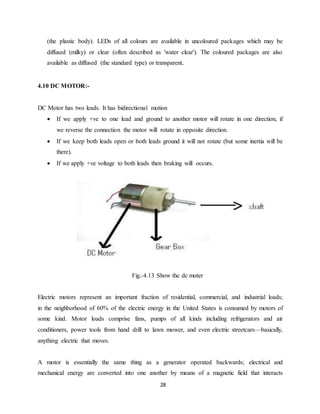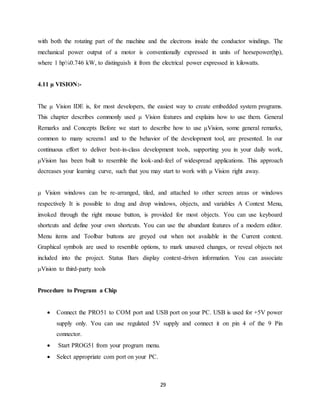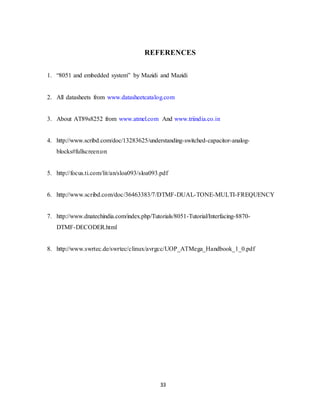This document describes a robot that can be controlled via DTMF tones sent from a mobile phone. The robot has a mobile phone attached that can receive DTMF tones corresponding to buttons pressed on the calling phone. A microcontroller on the robot decodes the tones and controls motors via an H-bridge motor driver to move the robot in different directions. The system allows remote robotic control over large areas using existing mobile networks without interference from other controllers.
